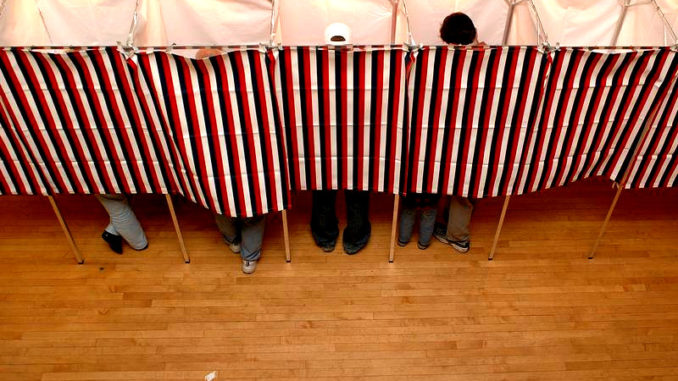
In the upcoming mid-term elections, the Democrats could very well regain control of Congress, begin impeachment proceedings against Trump, and attempt to roll back some of the president’s catastrophic policy changes.
But will Republic-led voter suppression efforts stop people in Democratic districts from casting their ballot in this pivotal election? This may very well be the case for record numbers of minorities, African Americans from urban communities, the family and friends of non-citizens, people with criminal records, and younger voters.
Recent nationwide investigations point to the likelihood of massive voter suppression in the mid-term elections, particularly targeting Democrat-leaning demographics.
The American Civil Liberty Union’s (ACLU) national office told Toward Freedom that, following President Obama’s election victory in 2008, twenty states passed laws that either suppressed people from voting or purged people from voter rolls. Almost all of these states remain in the hands of a Republican super majority including the governor, state legislature, and the state office that runs elections.
According to the Brennan Center for Justice, Republican-controlled states have introduced 90 bills that seek to tighten voting laws. The center recently stated voter suppression and purges “are poised to be one of the biggest threats to the ballot in 2018.”
Suppressing the Vote in the 2016 Election
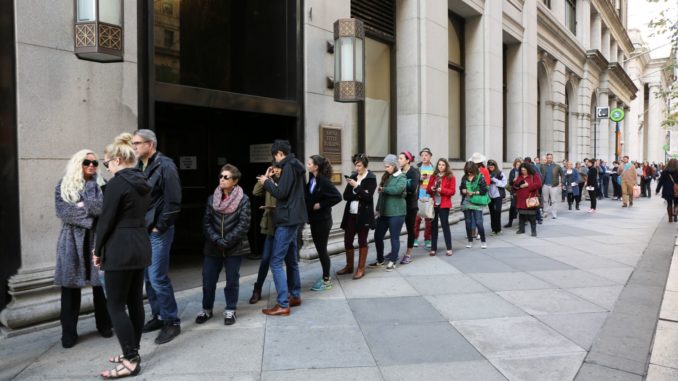
The Republican attacks against Democratic voters arguably yielded their greatest win in 2016. How Trump defeated Hillary Clinton is a complex answer with many variables, such as disgruntled blue-collar voters and Russian interference in the election.
But how much influence did voter suppression and purging have? The Brennan Center for Justice states the 2016 election was decided by 80,000 votes across three states (Michigan, Pennsylvania, and Wisconsin).
Taking this into account, the ACLU reported that 16 million voters experienced difficulty voting in the presidential election. Of the 16 million, an estimated 1.2 million were turned away, or their vote was not counted, according to the ACLU, citing the 2016 Survey of the Performance of American Elections conducted by the Massachusetts Institute of Technology.
According to the survey, nearly 250,000 of these potential voters walked away from a long line, pointing to how a lack of infrastructure can inhibit voting. An estimated 230,000 lacked proper photo ID, and thus were denied voting altogether. Another 300,000 votes were not counted due to registration issues, and 250,000 votes were “lost,” which means the voter refused to vote provisionally or their provisional ballot was not counted.
According to some experts, this is what the Republicans in many states wanted to happen; anecdotal evidence shows lower turnout favors Republicans.
Bobby Hoffman, voting rights strategist for ACLU’s Voting Rights Project, told Toward Freedom that the laws Republican-controlled states passed in the name of “voter integrity” and against voter fraud directly impacted many of the 1.2 million people who were denied their constitutional right to vote in 2016.
“These laws are part of an ongoing strategy to roll back decades of progress on voting rights,” says Hoffman.
Jim Crow for the 21st Century
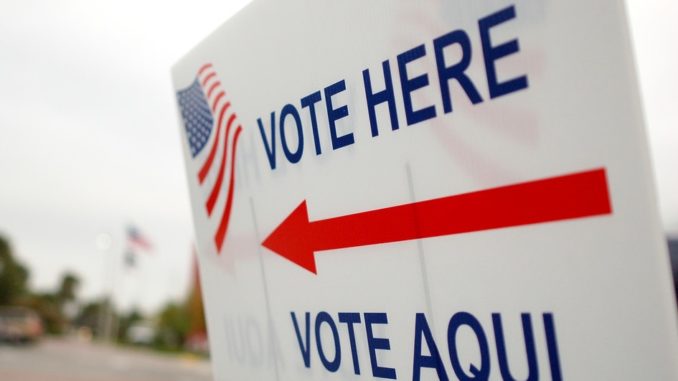
Years of calculated and deliberate “legalized” voter suppression and voter purges on the part of Republican-controlled state governments may very well have propelled Trump to the White House.
This suppression was legalized in the sense that laws were passed to ostensibly combat voter fraud and keep voter rolls clean and organized. However, many of the laws violate federal voting statutes because they stealthily target traditional Democratic voters.
The fiercest battles for voter rights are being waged in the nation’s major swing states, such as Ohio, which has picked the presidential winner 28 of 30 times over the last century. The Ohio Secretary of State, Republican Jon Husted, enforces what critics say is the nation’s strictest voter purging process, one that removes voters for not voting enough.
Reuters found that 144,000 voters from major Ohio urban areas were purged between 2012 and up until the 2016 presidential election. The number purged since 2004 could be over 1 million, say voting rights attorney Robert Fitrakis of Columbus. Many of the voters who were purged were minorities or from lower income communities – demographics which in Ohio tend toward voting Democrat.
The ACLU challenged Ohio’s purge process in federal court this year, but Husted appealed the case (Husted v. Ohio A. Philip Randolph Institute) to the conservative-leaning US Supreme Court, and in June the court voted 5-4 in favor of Husted. The ACLU and others fear Ohio’s purge process may be incorporated nationwide, especially in those states controlled by Republicans.
Other heated battlegrounds for the ACLU include North Carolina, Texas, and Wisconsin.
“Our concerns are nationwide,” said the ACLU’s Hoffman.
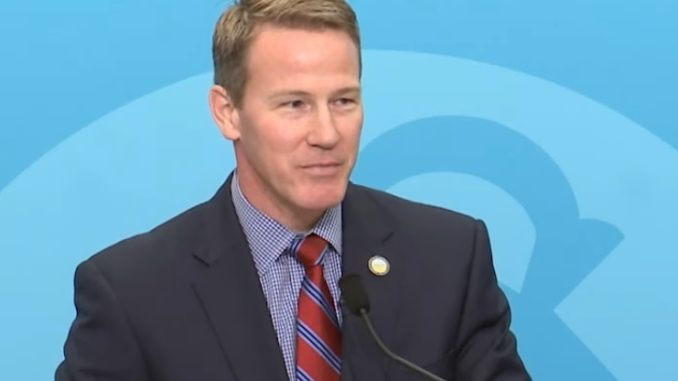
“After the 2008 presidential election, where we saw a much more diverse electorate come to the ballot, we saw states push back and kind of question the legitimacy of that election and start passing and pushing laws that made it more difficult to register to vote and cast a ballot,” he explained.
“And this is following a time from 1965 to 2008 where we saw a great expansion of democracy and laws that made it easier for individuals to access the ballot,” Hoffman continued, “such as the National Voting Rights Act of 1965 to the National Voter Registration Act of 1993, to the Help American Vote Act of 2002.”
Voting rights experts say Republican-controlled states are deliberately suppressing and purging minority and lower-income voters.
“It’s absolutely partisan targeting of voters who are disproportionately from urban areas,” says Fitrakis, who co-wrote the book The Strip and Flip Selection of 2016: Five Jim Crows and Electronic Election Theft. “Most of the modern Republican power grabs have been based on voter suppression.”
With Trump, partisan voting suppression is escalating under the guise of combatting voter fraud. Trump claimed millions of undocumented immigrants voted against him, but even leaders of his own party agree voter fraud is not widespread. Nevertheless, Trump’s federal government has pivoted from fighting voter suppression to combating voter fraud, a proven myth. The unspoken goal here is to suppress the Democratic vote – as other Republican leaders have done at the state-level in recent years.
Trump created the Presidential Advisory Commission on Election Integrity in May, 2017 to investigate voter fraud. The commission was led by then-Kansas Secretary of State Kris Kobach, a far-right Republican, supporter of Trump’s “birther” conspiracy theory about Obama, and Breitbart writer who has made claims that Latino and blacks are double-voting across the country. After narrowly winning a Republican gubernatorial primary in August by 345 votes, Kobach is running for governor of Kansas this November against Democrat Laura Kelly.
Trump’s commission, however, was disbanded in January of this year when it was paralyzed by lawsuits filed by voting rights activists.
But the commission still exists in a transformed capacity, now within the Department of Homeland Security. Some voting rights advocates celebrated the change, but investigative reporter Greg Palast believes this was a “brilliant” move to cover up the Trump administration’s voter purging.
“Now [they] hope to operate his racist voter purging program away from the glaring spotlight of the commission, under the special veil of secrecy afforded to the DHS [which is exempt from FOIA requests],” wrote Palast, author of the book The Best Democracy Money Can Buy, an expose into voter suppression and corporate influence in US elections.
Protecting Voters or Purging Voters?
The Department of Justice, through the National Voting Rights Act (NVRA) of 1965, is tasked with protecting voter rights. But under Attorney General Jeff Sessions the evidence is mounting that his DOJ, like Trump’s White House, is seeking to limit voter protections.
For example, in 2016 when voter-rights activists in Ohio first challenged their state’s voter purge process in the U.S. 6th Circuit Court of Appeals, the DOJ filed a brief against the purge process, saying it goes against the original intent of the NVRA.
But after the US Supreme Court took up Husted v. Ohio A. Philip Randolph Institute in 2017, the DOJ sided with Ohio’s Republican Governor Husted and filed a brief in support of Ohio’s voter purging.
“For some reason the Department of Justice decided it had been wrong for all these years and completely reversed itself and filed a brief on the other side,” says Ohio ACLU legal director Freda Levenson.
In June of 2017, the DOJ sent a letter to 44 states stating the NVRA “requires” them to more vigorously purge their voter rolls.
The Crosscheck Factor
While many Republican-controlled states have passed laws attacking voter rights for over a decade, most of these same states have also quietly purged voters with the help of a database software system called the Crosscheck program, which is available to every US state.
Crosscheck was initiated in 2005 by the far-right Republican Kris Kobach of Kansas. It was created to combat mass voter fraud by essentially checking state voter databases to see if voters were casting multiple ballots across state lines. Initially, only Kansas, Iowa, Missouri, and Nebraska implemented the program, which is free to use. But by 2010 the number of states using the program peaked to 29.
In an investigation for Rolling Stone, Greg Palast found that Crosscheck has analyzed nearly 100 million voters and so far tagged 7.2 million voters for suspicion of double-voting across state borders.
But Palast found that only four of the 7.2 million were charged with voting twice. The rest of these registered voters were targeted for simply having the same first and last names, and the same birthday. Of course, there are many Jessica Jacksons and Luis Gonzálezes in the US; millions of Americans share the same name and birthday.
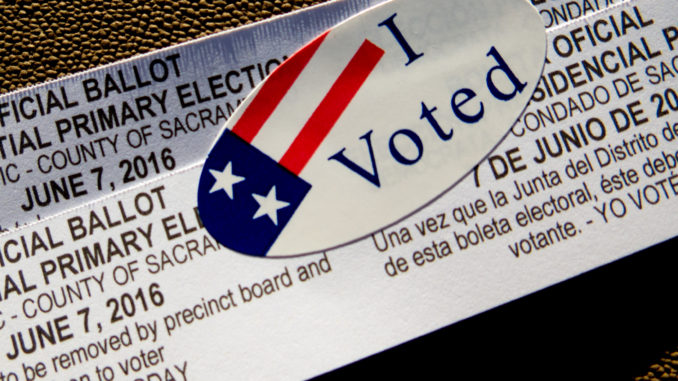
Crosscheck has forwarded lists of targeted voters to participating states which have then passed these lists on to their counties’ election boards. Either the state or the county can act on these lists of “false positives” as they wish, and they have.
Seven hundred Idaho voters were erroneously purged (and subsequently reinstated) in 2014, for instance. In 2013, Virginia’s election authority wrongly de-registered an estimated 40,000 who had been flagged by Crosscheck.
If a registered voter is flagged by the program, he or she has a significantly higher chance of being removed from the rolls, says Reid McCollum of Indivisible Chicago, an activist group spearheading a nationwide effort to convince states to stop using Crosscheck.
“If a voter has been submitted to a county for review by Crosscheck, and if you combine this with a state’s ‘use it or lose it’ law [such as in Ohio], that registration will be reviewed and if they determine the voter hasn’t voted in the last couple of elections, there’s a possibility the voter will be removed,” says McCollum. “It’s a combination of tools at that point.”
McCollum says Crosscheck oversamples minority populations based on its matching of common names. He says 1 in 9 African American voters and 1 in 5 Latino voters are oversampled.
“I believe Crosscheck is a partisan tool being utilized for partisan purposes,” he says. “It is not actually a registration maintenance program. If it were a registration maintenance program, the actual results that Crosscheck returns would diminish year over year over year. You would have less people that would be popping up if it were actually maintaining the voter rolls on a regular basis.”
After security experts in the fall of 2017 deemed Crosscheck databases easy targets for hackers, Kobach’s office has put a hold on the program until its more secure.
“This is a win,” says McCollum, but speculated Crosscheck could be up and running by the fall of this year, just in time for the midterm elections.
Purging Voters in Ohio
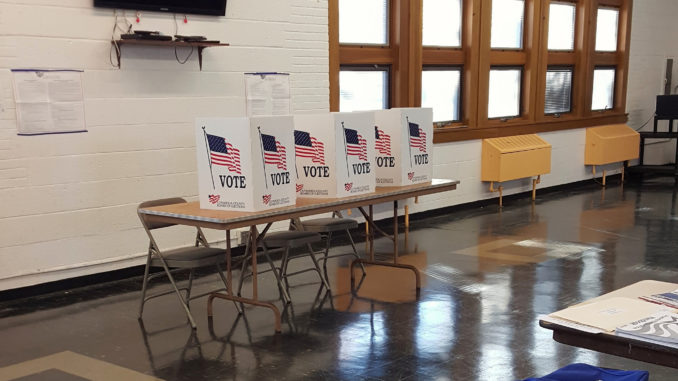
Voter suppression by Republicans in Ohio has been widespread long before the US Supreme Court ruled in June that the state’s purging process does not violate any part of the NVRA.
Purging voters makes a different in close races. For example, in a special election in August for Ohio’s 12th Congressional District, Republican Troy Balderson narrowly defeated Democrat Danny O’Connor by 1,600 votes, with over 200,000 voting in a district that is reliably Republican.
Fitrakis, the voting rights attorney from Ohio, believes Ohio Republicans can only win tight races by purging voters.
“Without a doubt, stripping of voter rolls, which disproportionately impacts Democrats, is the precursor for Republicans winning close elections,” he says.
According to activists in Ohio, if a registered voter in the state does not vote over a two-year period, even in a mid-term election, the process to purge is initiated by sending a confirmation notice that must be returned. If the notice is not returned, and he or she fails to vote in a federal election over the next four years, the voter will be de-registered.
“This is just another example where instead of voters choosing their politicians, it’s politicians choosing who their voters are,” says Levenson of the Ohio ACLU.
She says the confirmation notice looks like junk mail. “No one notices this post card, and then no one tells you you’ve been removed,” she says.
So how can the state of Ohio remove voters when both the National Voting Registration Act of 1993 and the Help America Vote Act of 2003 make it illegal to purge a registered voter for not voting?
“The Secretary of State is saying, ‘No, we’re not removing them for not voting, we’re removing them for failure to respond to the notice,’” says Levenson.
The League of Women Voters found that four million Ohioans, over half the state’s registered voters, have been sent confirmation letters since 2010.
Many registered voters did not vote for a president in 2016, presenting a monumental challenge for voter-rights activists: How many in Ohio failed to respond to the confirmation notice sent years earlier, and how could this affect the 2018 midterms and the 2020 election?
“If someone hasn’t exercised free speech in a while you don’t make them go re-register. Voting is a constitutional right,” says Fitrakis. “There’s no logical reason [for this process] other than partisan voter suppression.”
Levenson of the ACLU was interviewed for this story before the US Supreme Court certified the Ohio purge process in June. She offered this warning before the court’s decision.
“If the US Supreme Court legitimizes this process they will be saying it doesn’t violate the law and Ohio will continue to purge and disenfranchise all these people,” she explained. “And more importantly, [this will] give a green light to other states. It could open the floodgates.”
How Wisconsin Republicans Suppress the Vote
When Republican Scott Walker became Wisconsin’s governor in 2011, one of the first pieces of legislation he and the state Republican legislature passed was a strict voter ID law. The law requires voters to present photo identification at the polls in order to cast a ballot.
Trump won Wisconsin by roughly 22,000 votes in 2016, but Walker’s voter ID law may have stopped thousands of registered voters across the state from voting in that election.
Incredibly, many of these non-voters who believed they did not have the correct ID actually had qualifying ID, said University of Wisconsin political science professor Kenneth Mayer.
Mayer surveyed 288 registered voters from Milwaukee County and Madison’s Dane County who did not go to the polls in 2016. He asked them why they refused to vote and what IDs they had. Some qualifying voting IDs in Wisconsin include driver’s license, passport, student ID, and military ID.
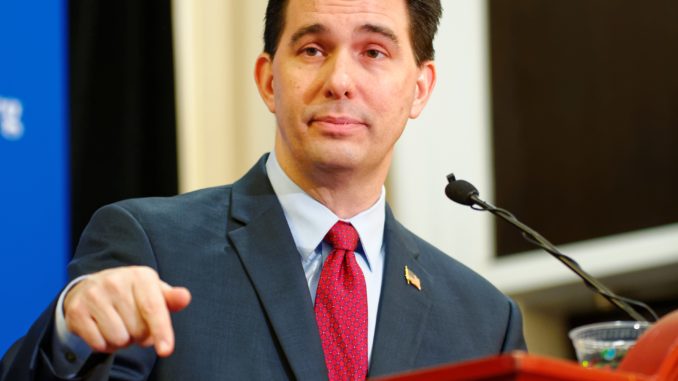
Mayer told Toward Freedom that six percent of non-voting registrants said they did not vote because they either believed they did not have the proper ID or cited the ID law as the main reason for not voting. But he said of this six percent, half actually had qualifying ID.
“Most of the people who cite lack of ID for not voting actually have a qualifying ID,” he says. “So, there’s a lot of confusion about the law, and this is consistent with what other research has shown. People mistakenly believe their driver’s license has to have their accurate address, which it doesn’t.”
After extrapolating the data, Mayer found that between 16,801 and 23,252 registered voters were likely influenced by the law to not vote.
The counties Mayer surveyed are heavily Democratic. What’s more, the voter ID law’s chilling effect reverberated through lower-income and minority communities. Mayer says his data suggests 27.5 percent of African Americans were deterred from voting.
Wisconsin Republicans’ official reasons for strict voter ID laws are to protect the security of elections and avoid voter fraud. But these laws are actually convincing voters to not participate.
Voter ID laws in other states are having a similar effect on registered voters, Mayer explained.
In Kansas this past June, a federal judge struck down a 2011 law which required proof of citizenship to register to vote. Immediately following the ruling, however, then-Kansas Secretary of State Kris Kobach directed county clerks to keep enforcing the law.
The voter ID law in Texas, considered one of the strictest in the nation, was blocked twice before by federal courts. Yet in April of this year, the 5th U.S Circuit Court of Appeals in New Orleans ruled the law can be enforced through the 2018 mid-terms.
Dissuading Voters in North Carolina
Forty-six states have challenger laws which allow private citizens to challenge another private citizen’s right to vote, according to the Brennan Center for Justice. In North Carolina the law was heavily utilized to challenge thousands of African American voters leading up to the 2016 presidential election.
The Center for Media and Democracy, a nationally-renowned investigative journalism and advocacy group, found that the sudden resurgence of the challenger law in North Carolina was a far right-wing plan bankrolled by GOP mega-donor Art Pope, a founding board member of the Koch brothers’ Americans for Prosperity, one of the most influential conservative organizations in the country.
Pope is the multimillionaire CEO of Variety Wholesalers, a discount store. In 2005, he founded the non-profit Civitas Action, which has spent hundreds of thousands of dollars to help elect Republicans to the statehouse and giving the GOP a majority in North Carolina for the first time in over a century.
Just before the 2016 presidential election, members of Civitas sent out a mass mailing, some reading “Do Not Forward.” (They claimed to be non-partisan and said they were providing a service to local county board of elections and North Carolina State Board of Elections.) If the mail was returned undeliverable, conservative activists argued the voter no longer lived in the county and thus needed to be purged.
As a result, 6,700 voters, mostly African American, were removed. Just days before the 2016 presidential election, a federal judge reversed the removals, calling them “insane.” Though the voters were allowed to vote, the purging likely dissuaded thousands from casting their ballots.
“We’ve really seen a rise in this narrative of voter fraud coinciding with the rise of people on the county level [making challenges],” says Jen Jones, the Director of Communications for Democracy North Carolina, an advocacy group focusing on increasing voter participation and limiting the role of big money in politics.
One bright side for North Carolina Democrats in 2016 was the election of Roy Cooper for governor. Yet the Republican-controlled legislature immediately passed a bill that took away Cooper’s ability to choose members of the State and County Board of Elections, says Jones.
Jones says this has caused partisan gridlock and an inability to move forward on election issues such as early voting dates and how the state’s challenger law should be interpreted and administered.
“You have the possibility for tremendous chaos if you can’t move forward the wheels of the elections because you have an election board that can’t decide on how to move forward on early voting and provisional balloting,” she said.
The Shadow Over the Ballot Box
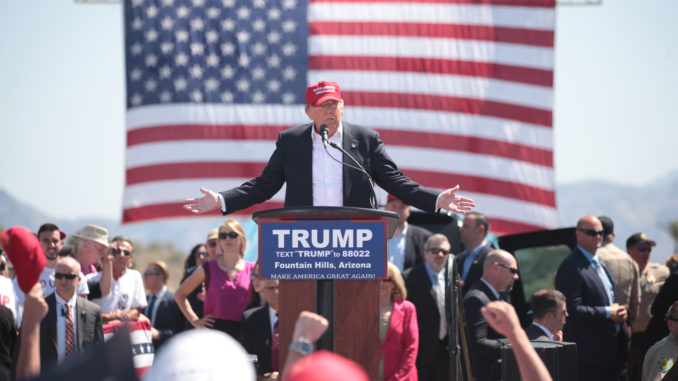
Even though today’s technology should make voting easier and more accessible than ever before, the barriers to suppressing the vote and convincing voters to not cast a ballot are mounting, says Hoffman of the ACLU’s Voting Rights Project.
“There are still a lot of states that don’t offer online registration. There are states that don’t provide for no-excuse absentee balloting. There are still states that don’t offer early voting,” he says.
With the use of computer databases, there is no reason any state should remove a voter for not voting, says voting rights attorney Fitrakis of Ohio. “Why is the remedy to purge when you have computer databases and you require an ID to vote?”
Even with advanced technology in place, voters are regularly purged nationwide. Fitrakis gives the example of Ohio, where Secretary of State Jon Husted has purged voters by de-registering them rather than defending their constitutional right to vote.
The US has fifty different sets of voting standards, making it one of a handful of nations with no national standard for voting, Fitrakis explains. There is no national law requiring elected officials to register voters or defend their voting rights. If there was such a national law, he argues, politicians could be charged for unlawfully purging voters.
“In a just society, Husted would be criminally charged for de-registering citizens who are eligible to vote,” Fitrakis says. “I don’t know where they got this idea their job is to de-register as many citizens as they could, and in most cases 75 percent of them are still eligible to vote.”
Considering the widespread purging of voters, Fitrakis recommends that individuals check their own voter registration.
“Citizens need to take it upon themselves to check their registration, and that can be done online,” he continues. “In this day and age, I don’t care if you’ve voted forty years at the same location and you haven’t moved, someone may have thrown you off the voting rolls.”
After the US Supreme Court’s ruling in favor of Ohio’s purge program, other Republican-controlled states may implement the nation’s strictest voter purge effort.
If Republican-controlled statehouses continue to pass more stringent voter ID laws and federal courts subsequently uphold them, research shows these laws will have a chilling effect on voters even if they have the proper ID needed to vote.
If Republican Kansas Secretary of State Kris Kobach is able to secure Crosscheck from hackers he is more than likely to restart it, raising once again more barriers to voters. And if far-right multimillionaires such as Art Pope of North Carolina continue to fund efforts to disenfranchise voters, Republicans will likely see more victories in the short and long term.
Republicans now completely control the governments of 26 states while Democrats control just six. Critically, Republicans have majorities in the legislatures of several key swing states such as Ohio, Wisconsin, Michigan, Pennsylvania, and North Carolina.
Fitrakis says if these Republican state legislatures and state super majorities continue to push the voter fraud myth and continue to assault voters’ rights, what happened in 2016 could be just the beginning.
“Trump will probably be re-elected if he’s not already impeached,” he says.
***
Originally from Buffalo, NY, John Lasker is a journalist residing in Ohio. Lasker has been producing investigative reports for TowardFreedom.com for over eight years, breaking stories on topics such as resource conflicts in Africa and the race to militarize space. His reporting on sexual violence against women in the military won a 2013 Project Censored Award. See more of his reporting here.
Copyright Toward Freedom 2018. If you would like to reprint this story, please email editor(at)towardfreedom.org.
